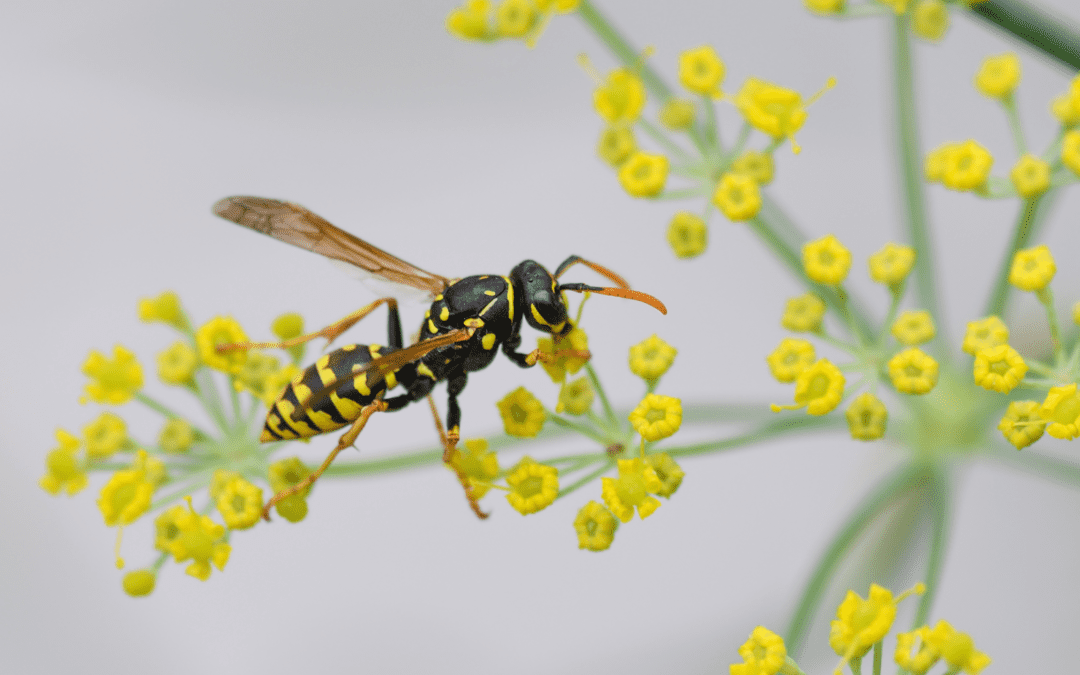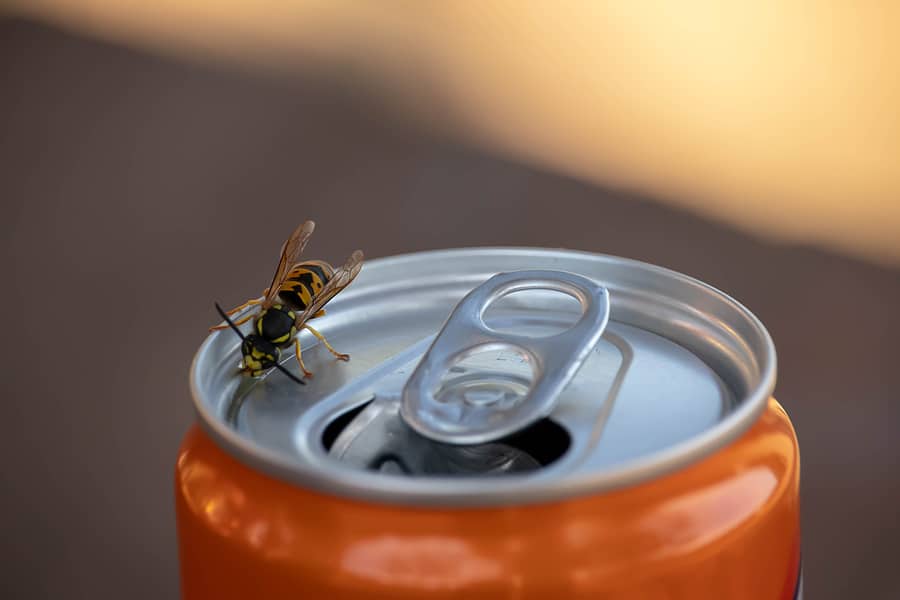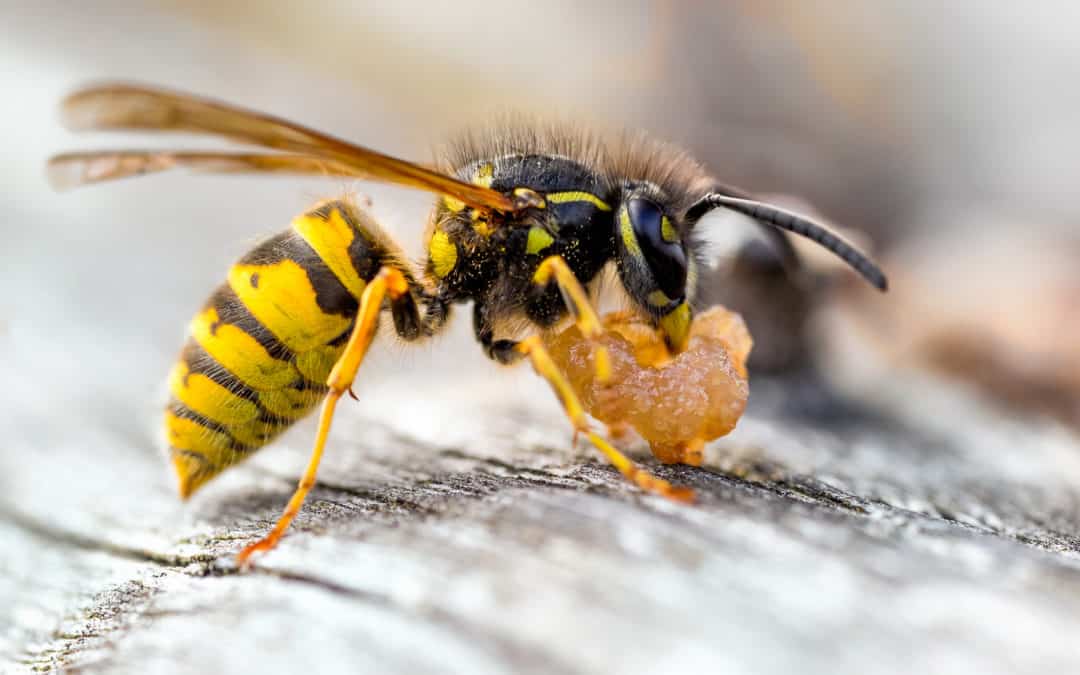READY TO GET STARTED?
REQUEST A FREE ESTIMATE
Fill out the form below or call (888) 466-7849 for a free, no-obligation estimate.

Stinging insects, such as yellowjackets, wasps, and hornets, send more than 500,000 people to the emergency room each year. With the weather warming up, these pests are looking for a food source. While you’re enjoying your backyard barbecues and relaxing by the pool, remember these tips to help keep stinging pests from ruining your outdoor fun.
These slim-bodied insects have six legs and two wings. They are busy at work scavenging for food during the summer months. They will typically build their nests in branches, porch ceilings, and attic rafters. They are highly attracted to picnics and backyard barbecues, increasing your chance of being stung.
These social insects are found anywhere with human activity. They feed on sweets and proteins, often invading outdoor events. They have a non-fuzzy black and yellow striped body and measure less than an inch long. Sometimes they build their nests in high places, like the side of a building. Most of the time, yellow jackets’ nests are built in or near the ground, including shrubs, timber, and logs.
These insects typically prefer a forested environment and are known to build nests in hollow trees or walls of houses and attics. They are attracted to light and will try to fly into your windows at night if a light is on. They are generally non-aggressive near their nests, but if they feel threatened, they will potentially sting.
If the stinging insect problem is bigger than you can handle, then calling your local pest control company might be the next step in prevention.

Spotting stinging pests around your business can be alarming. Yellowjackets, wasps, and hornets are all active during the warmer season as they go in search of a food source and a place to establish their colony. These pests can pose a serious health risk to your customers and business. We break down the most common stinging pests and the best ways to avoid them.
Wasps
Wasps will build their paper-like nests on eaves, porch ceilings, branches, and windowsills. These pests search for food during the summer months. They are highly attracted to any food found outdoors, along with anything with a fragrant smell such as candles or flowers. When threatened, these pests will sting multiple times and eventually call on reinforcements from other wasps by emitting pheromones.
Hornets
Hornet nests are built in hollow trees or the walls of buildings and attics. These pests are attracted to light and will often fly into open windows at night if they see a light. Hornets like to eat fruit and honeydew, causing them to congregate in areas where these foods are found. While they are non-aggressive near their nests, they will sting if they feel threatened. When stings occur, the stinger can get lodged in the skin.
Yellow Jackets
Yellowjackets are social insects and can be found wherever humans are. These pests like to eat sweets and proteins and will invade outdoor events to find these foods. Yellowjackets build their nests in high places, such as on trees and buildings, or on the ground. If they feel threatened, they will sting multiple times which can be extremely painful.
Stinging Pest Prevention for Your Business
If you have a problem with stinging pests, contact Commercial Services for an inspection and treatment plan.

An encounter with a stinging pest can always be alarming, as they are known to have a painful sting. Since stinging pests are most active during the spring and summer, it’s important to know the most commons ones to look out for and how you can protect yourself and your family.
Social in nature, the yellowjacket can live in nests or colonies containing anywhere from 1,000 to 4,000 workers. Yellowjackets tend to build their nests on trees, buildings, and in the ground. Unlike bees, these insects have smooth stingers where they can sting several times if they start to feel threatened, which can be severely painful. These insects are highly attracted to sweet foods and proteins. If you plan on having a picnic or BBQ outside, make sure to keep your food covered tightly to eliminate the chance of attracting them.
Another popular stinging insect you should be aware of this spring and summer is the hornet. Hornets can sometimes be a benefit to homeowners as they can help control common household pests; although, they can quickly become a nuisance as they will often build nests throughout your property, such as in hollow trees, in the walls of houses and attics, and even in abandoned beehives. Like yellowjackets, these insects have smooth stingers. If stung by a hornet, the stinger can get lodged in the skin at the site of the sting. Hornets will eat tree sap, fruit, and honeydew. To prevent an encounter with these insects, keep both your food and garbage sealed in containers.
Known to build construction paper-like nests on branches, porch ceilings, eaves, and attic rafters, wasps can easily infest your entire property. These pests live in small colonies and like to eat nectar, along with common household pests such as flies and caterpillars. If these insects feel threatened or their nest is disturbed, they will sting multiple times. Their stings can be painful and often cause an allergic reaction. If you encounter hornets, don’t swat at them as this will only agitate them; instead calmly walk away and they generally will not follow.
If you’ve noticed these popular stinging insects around and inside your home, it’s best to reach out to your local pest control company to inspect and safely remove these insects.